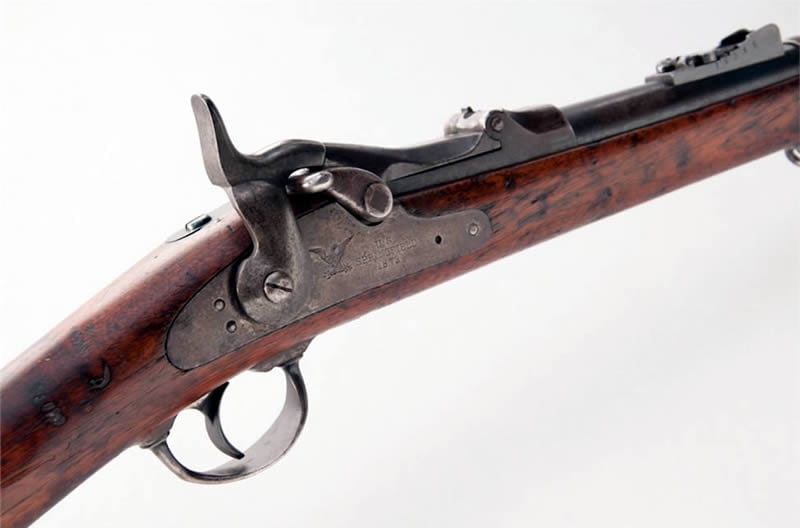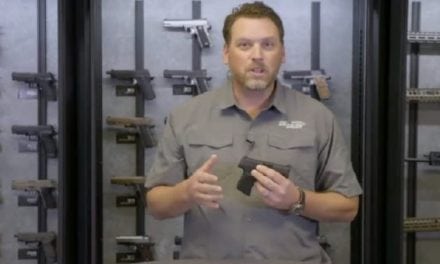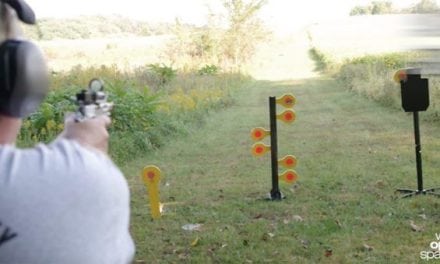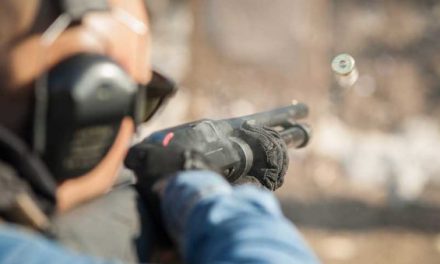by Charles R. Drago, Editor, OEL Magazine
Of all the disadvantages that contributed to the annihilation of Brevet Major General George Armstrong Custer’s five-troop battalion at the Battle of the Little Bighorn –among them superior numbers of enemy forces (a 5:1 ratio seems a safe bet), criminal disobedience of direct orders by junior officers in command of support battalions, and terrain so inimical to cavalry maneuvering as to negate every advantage commonly enjoyed by mounted troops in generically similar situations – none was more devastating than the inferiority of the Seventh Cavalry’s government-issued single shot carbines.
The Springfield carbine Model 1873 was selected by the Army’s Ordinance Department after a two-year testing period (1871-73). Field trials of nearly 90 rifles and carbines examined entries from Mauser, Spencer, Freeman, and other manufacturers. The final four contenders included the Ward-Burton bolt action rifle, the Sharps model with a vertically sliding breechblock, the Remington rolling block, and the so-called “trapdoor” Springfield.
Given the ready availability of repeating rifles, the Ordinance Department’s choice of the Springfield yet confounds students of Custer’s final defeat. Based upon a close review of surviving records, however, we learn its decision to go the Springfield route was based on such factors as economics, reliability, ruggedness, and the manner in which such rifles impose an efficiency of ammunition usage.
The Model 1873 weighed seven pounds and was 41 inches long. It fired .45-caliber, copper-cased cartridges, a 405-grain bullet, and a charge of 55 grains of black powder. While the advertised effective range of the gun was under 300 yards, it could hit targets at twice that distance. Its muzzle velocity was plus-minus 1200 feet per second at 1650 foot-pounds of energy. An expert could fire the weapon with an acceptable degree of accuracy 12 to 15 times per minute.
Under ideal conditions.
Alas, conditions were anything but ideal for Custer’s troopers as they fought for and lost their lives on terrain that the Lakota (Sioux) called the Greasy Grass. The 1983 wildfire that raced through the Little Bighorn National Monument resulted in the discovery, via subsequent archaeological digs, of artifacts that swelled the number of recovered cartridges, cases, and bullets to nearly 2500.
Ballistic examinations indicated that at least 45 cavalry weapons were identifiable; based upon the location of the finds, the progress of an individual weapon could be traced across the site. Mappings were so precise that cartridges from a given Springfield could be found embedded in positions originally occupied by Native American combatants and then later by elements of Custer’s command.
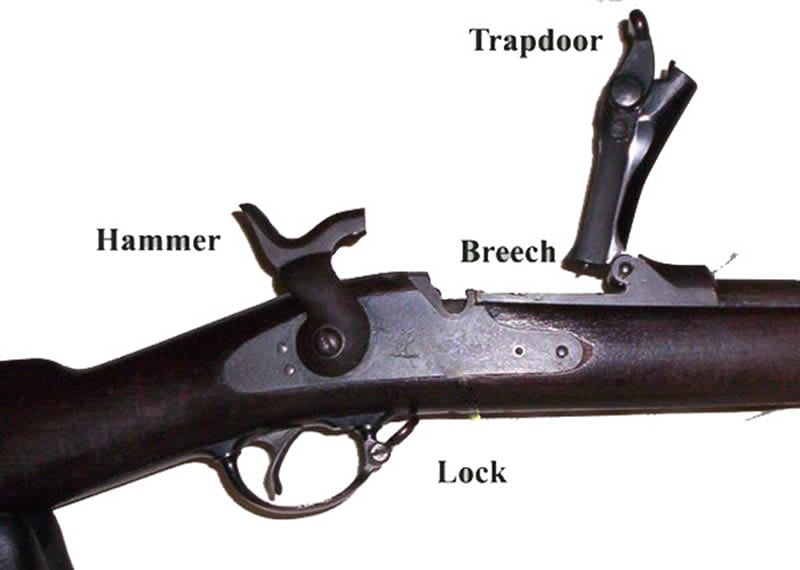
Put another way, the shifting possession of a Springfield from cavalry trooper to Lakota or Sheyela (Cheyenne) fighter could be noted and, when compared with evidence of troop movements during the progress of the fight, help provide a timeline and a tactical outline of the combat.
In addition, evidence of at least 134 Native American firearms versus 81 (including pistols) for the soldiers was collected. This included 62 .44-caliber Henry repeaters and 27 Sharps .50-caliber weapons.
Five miles to the south of Custer’s field, two battalions of the Seventh Cavalry dispatched early in the day by their commander to fulfill the requirements of a multi-flank attack assumed defensive positions as their respective commanding officers disobeyed a written order from Custer to “come on, big village, bring pacs [sic].” Most of these men survived the engagement; one of them, Private Charles Windolph, later concluded that while half of the opposing force was armed with bows and arrows, a quarter of their number were in possession of then-modern repeating rifles and carbines.
One more gun-related factor that contributed to Custer’s defeat was the inferior production of Springfield ammunition – defects that caused the ejector mechanism to jam, forcing troopers to attempt to pry the spent cartridges from the weapon using knife blades or similar instruments.
It is not uncommon to note how firearms have dictated the course of history. Yet even if one’s sympathies lie with the Native Americans whose peaceful village was attacked by Custer’s Seventh Cavalry on June 25, 1976, there can be no avoiding the conclusion that those who ostensibly won the Battle of the Little Bighorn were to lose the war fourteen years later at Wounded Knee – where another weapon of war, the Hotchkiss gun, “sent 200 Indians to heaven” and ended the so-called Indian wars of the 19th century.

